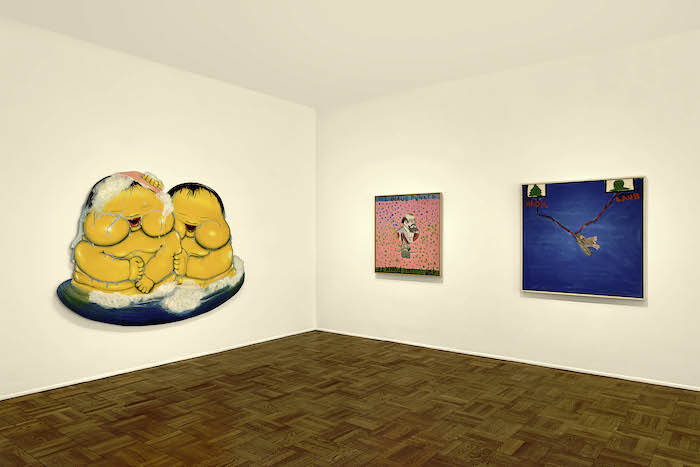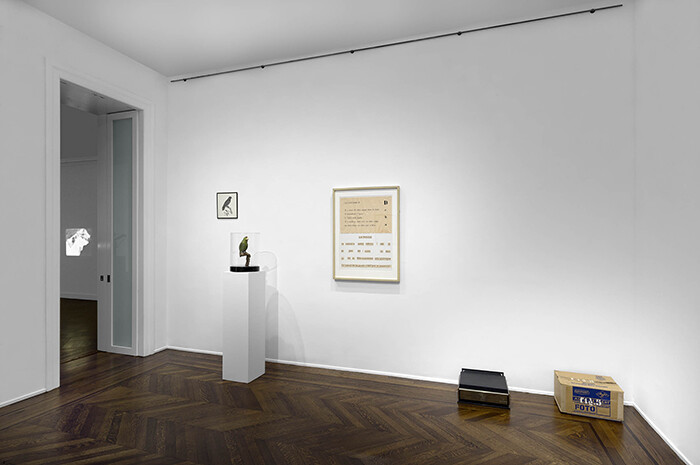Categories
Subjects
Authors
Artists
Venues
Locations
Calendar
Filter
Done
May 11, 2017 – Review
Jörg Immendorff’s “LIDL Works and Performances from the 60s”
Andrew Stefan Weiner

At the time of his death in 2007, Jörg Immendorff was celebrated in his homeland as one of postwar Germany’s most famous artists, and also as one of its most infamous. Earlier that year the terminally ill, functionally incapacitated painter had directed a team of assistants to produce an official portrait of the former Chancellor Gerhard Schröder. The commission from Schröder, a friend of the artist, offered him a chance to redeem himself after a spectacularly louche scandal in which police found the wheelchair-bound Immendorff enjoying the company of seven prostitutes in a posh hotel suite, accompanied by some eleven grams of cocaine (on a Versace tray, no less). Whether because this rehabilitation was in fact successful, or more probably because Immendorff’s improbable escapade only enhanced his rakish reputation, a decade later the artist’s status in his homeland looks to be secure.
However, outside Germany matters are less clear. While Immendorff’s name is widely recognized, he has failed to attain the sort of superstardom associated with peers like Isa Genzken, Sigmar Polke, or Gerhard Richter, or even with younger artists like Martin Kippenberger. Although his work is in the collections of MoMA and Tate Modern, along with many other prominent museums, …
March 17, 2016 – Review
“Marcel Broodthaers: Écriture”
Alan Gilbert

It’s only appropriate that visitors to Michael Werner’s current Marcel Broodthaers exhibition would encounter a stuffed parrot as part of the installation Dites Partout Que Je L’Ai Dit (1974). Broodthaers was a master at creatively parroting—both consciously and unconsciously—the tropes, images, and theory that may now seem a bit tame or even passé, but which during his decade or so working as an artist (1963–1976) were some of the most heady and cutting-edge ideas of the time: René Magritte’s indexically challenged “Ceci n’est pas une pipe” as contemplated by Michel Foucault in 1968; Jacques Derrida’s distinction between speech and writing; Jacques Lacan’s string of metonymic associations, etc.
Take, for instance, Parle Ecrit Copie (1972–1973), an image of which could serve quite well as the cover of any of Derrida’s early works. In a wall-mounted vitrine, three nearly identical blue typewriters with raised lids are aligned to face the viewer, with the word PARLE letterpressed in purple on a strip of canvas inserted into the carriage of the one on the left, the word ECRIT letterpressed in yellow for the one in the middle, and COPIE in the typewriters’ same shade of blue placed in the one on the right. Not exactly …